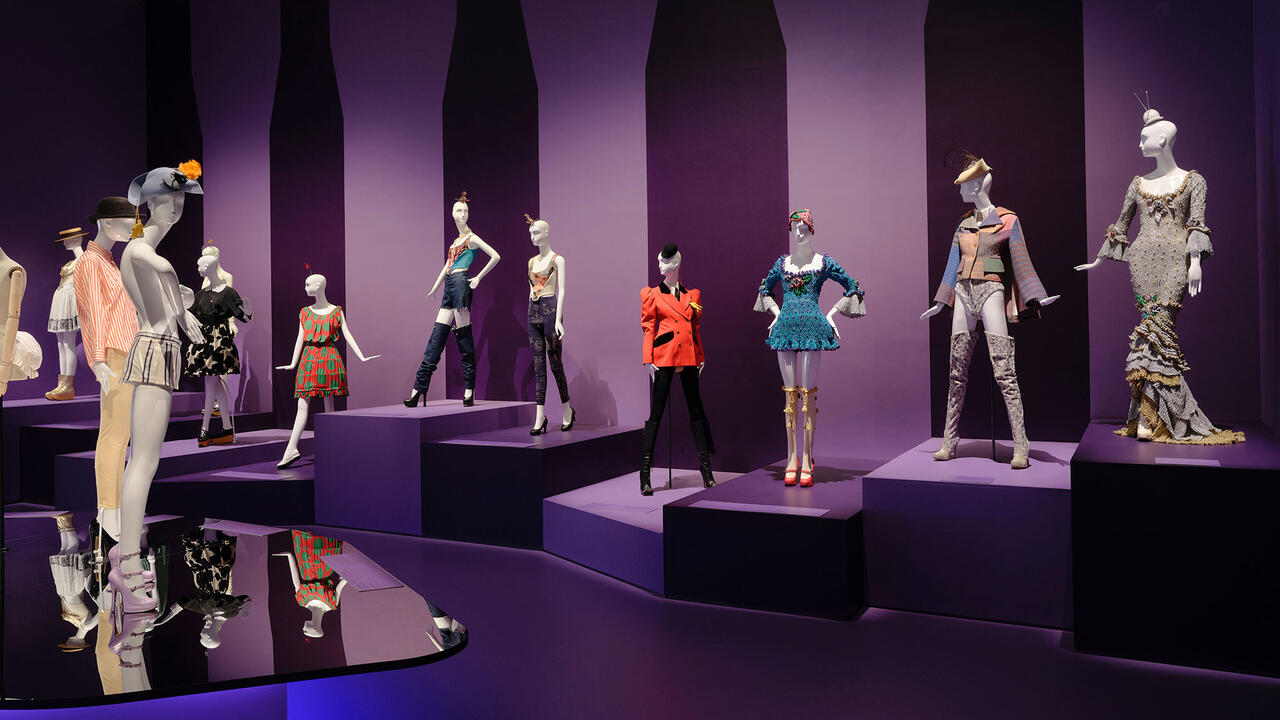Jean-Luc Godard

Like an X-rated film, the much anticipated and controversial ‘Godard show’ began with a series of disclaimers. An official sign posted near the escalators read ‘not suitable for all audiences’. Museum attendants warned parents with kids not to take them into the final room (‘Beware there is a TV screen showing porn on a kitchen table!’). And finally, pasted on the entrance wall, instead of the usual vinyl lettering, an enlarged photocopy of what seemed to be a draft press release announced, ‘The Pompidou Centre decided not to carry out the exhibition project entitled “Collage(s) de France. Archaeology of the Cinema”, because of artistic, technical and financial difficulties that it presented, and to replace it by another project entitled “Travel(s) in Utopia, JLG, 1946–2006, In Search of Lost Theorem”.’ Jean-Luc Godard – initials JLG – himself carefully crossed out the words ‘technical and financial’ from the official text (but one can, of course, still read them). The exhibition’s new title was handwritten on the photocopy in marker pen, next to a crossed-out picture of a model of the cancelled exhibition. On some shelves left in the entrance (as if an employee had forgotten to remove them before the show opened) remained the pens used by JLG.
In the publication accompanying this exhibition – and the integral cinema retrospective of Godard’s 140 works (feature and short films, essays, commissions, music videos, commercials) showing alongside it – Dominique Paini writes: ‘At the beginning of the autumn, a model of nine rooms was developed, made manually by the filmmaker. Drawing methodologically on an exploration of memory (whence the notion of archaeology), this model “exhibited cinematic thought [...] and provided a critical point of view on the very fact of exhibiting cinema”.’ Half a year before the opening the press announced that Godard had evicted Paini, ‘his’ curator. Since then he has communicated only via handwritten faxes to the administrator of the Pompidou Centre. No press release was issued (according to the filmmaker’s wishes), and he did not attend the opening. He has not made any public comment so far except in an interview for the newspaper Libération, in which he summarized the show as ‘two exhibitions together, but nothing remains of the first one. What one sees is the screenplay of this exhibition, which was never made. It is the State. It is authority. And it is maybe my relationship with all that.’
‘All that’ at first sight was a huge, trashy mess made by a 75-year-old man. (Think early 1990s’ Karen Kilimnik and Cady Noland meets Raymond Hains meets Jason Rhoades meets Hans Haacke meets Marcel Broodthaers meets Martin Kippenberger meets Guy Debord meets May ’68 pavements meets car boot sale.) ‘All that’ also included models of the cancelled show at different scales and stages; electric wires still left hanging, walls remaining unfinished, a short sequence from Citizen Kane featuring a ‘No trespassing’ sign looped on a plasma screen, next to which some props, planned to be used in the initial exhibition proposal, were placed like discarded material (from a Duchampian bicycle wheel attached to a loudspeaker to a puppet made after a painting by Amedeo Modigliani). Original paintings by Henri Matisse, Hans Hartung and Nicolas de Staël loaned from the Musée National collection upstairs were hung next to an unmade bed surrounded by dust and waste, like posters in a Godard film. (Think Tracey Emin meets Vincent van Gogh meets Ilya Kabakov meets Puccini's La Bohème.) Elsewhere, another bed with a giant plasma screen lying on pillows showed war explosions shot by Ridley Scott. The show was full of flat screens with excerpts from films by Godard and others, carefully edited and chosen by the filmmaker, inevitably forcing you to read an overall hypertext into the objects, images and sounds, but there was no definitive conclusion to be drawn.
Unlike fellow filmmakers lately turned ‘video artists’, such as Chantal Ackerman or Agnès Varda, Godard does not show us seductive video installations ‘ready to sell’ on the art market. He obviously plays with his myth, glory and failure, and questions his role and his relationship to his medium. He invents a kind of live-exhibited 3-D cinema for the era of plasma screens and reality TV shows. If you think films should not have a final cut, and that cinema as a medium is finished, this exhibition might never be over (Godard has removed and added things since the opening and is rumoured to have shot footage inside the show). He seems to regret an exhibition of his work, which he undoubtedly did everything to prevent, although the actual show was never bitter – only urgent, ironic, energetic and political, like Weekend (1967) or Les Carabiniers (1963). Clever détournements and multi-level scenarios create enigmas suggesting the act of deciphering itself (one of the props exhibited was a replica of Jean François Champollion’s Rosetta stone – discovered in the early 19th century and the key to translating hieroglyphs). After losing control, it seems Godard regained total charge of his exhibition, making this possibly the first large-scale, institutional retrospective that is officially self-curated, self-managed and embedded in an autonomous structure of decision-making – institutional critique at work.















